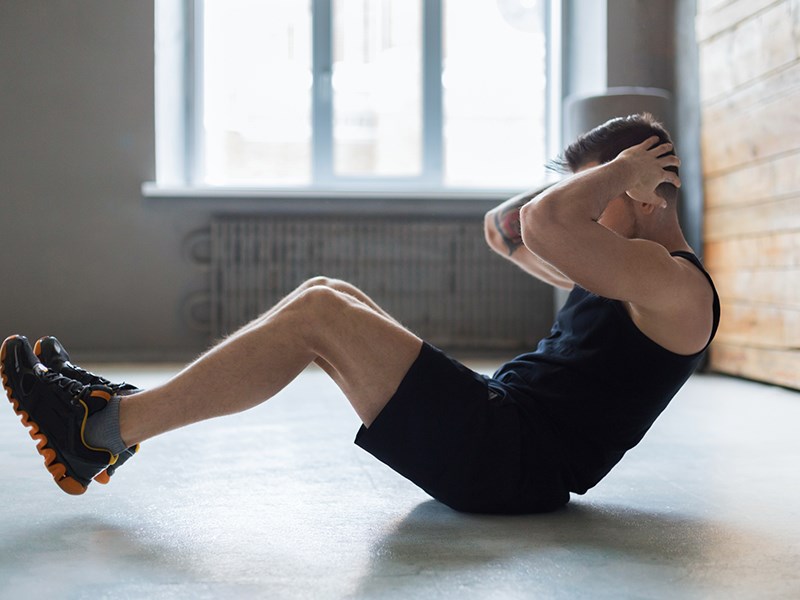I was recently asked about the dangers of crunches. While it is true that certain exercises and movements can definitely place more stress on our bodies, we shouldn’t discount an exercise just because it is labelled a certain way, good or bad, but rather evaluate an exercise based on how it contributes to our overall goals.
In my own personal workouts, and the workouts I plan for clients, there are two criteria that must be satisfied for any exercise: is it safe and is it useful?
Safe is a very broad term, especially in fitness. Many exercises can essentially be “safe.”
A push-up, for example, is quite safe. There are no dumbbells or extra weights being moved, just body weight. You are close to the ground, so there is a low falling risk. And yet, you could injure yourself doing a push-up.
Improper form and technique, lack of mobility and the necessary motor control can take any “safe” exercise and raise the risk of injury exponentially. So for myself, safe means: is the exercise working with the body’s functional patterns, and is it a reasonably teachable exercise?
To meet the useful criterion, you need to know what the goal of your workout is, and your overall goals. Your time spent exercising would greatly benefit from determining what exercises or movement patterns you need for function in your everyday life, occupation, or sport, and then doing them.
For example, it wouldn’t make sense for a soccer player to spend a lot of time working on overhead strength, especially under load. So what should you take into consideration when choosing exercises for your workouts?
If the exercise will bring you closer to your goals, include it. Then, is it useful and is it safe?
A biceps curl seems innocuous. Hold a weight and lift (curl) it to your shoulder. But start to add a heavier load and suddenly you are swinging your hips forward and leaning backward just to get the weights up, putting yourself in a compromised position, with stress on muscles, tendons and joints.
Proper form and technique will always be the backbone of exercise safety. Be honest with yourself about how much you can lift, and rather than jumping to the far end of the rack, work your way up, slowly and with control. Not only will improper form lead to greater risk, it may also lead to working unintended muscle groups and a great deal of wasted energy.
As in the biceps curl example, your back and hips are not the intended target, but start swinging the weight, and that’s where the work will come from. Your energy should be spent on the lift, not on compensating for poor form and a less efficient range of motion.
For me, exercise choices are based on safety, usefulness, functionality and whether they bring you closer to your goal. Our bodies are meant to move, and far too often we don’t move them enough. We let misinformation and a lack of planning get in the way of being functionally active and seeing ourselves through to our goals.
Do what you can with what you have where you are, and always prioritize the positive.
Melissa Sloos is a certified group fitness instructor, spin instructor and co-owner at Coast Fitness.



